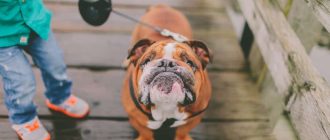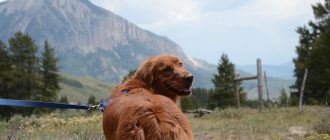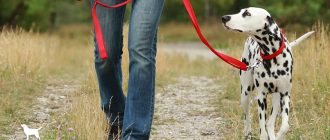If you are new to dog walking, you may be wondering how to put a dog leash on your pup. The following tips can help you put the collar or harness on your dog correctly. The collar should be snug enough to stay on your dog’s neck, but loose enough to allow it to move freely. A tight collar may cause your pet to misinterpret your movements or leave you feeling tense. Fortunately, you can learn the correct way to put a collar on your pup over time.
How do you put a dog leash on a dog?
A leash is one of the most essential elements of a harness for your dog. It should be snug enough to keep your dog from wriggling out, but loose enough to control its movements. Make sure you find the right fit for your dog. If it is too tight, it may cause your dog to misinterpret your movements. Similarly, if it’s too loose, it may cause tension in your arm. As with any harness, practice makes perfect.
It is best to begin training your puppy in an area where he is comfortable and familiar. You can attach the leash to his front D-ring, so you can attach his or her ID tag. Once he or she is comfortable, hold a shorter section of the leash with your other hand and walk your dog. It’s important to reward your dog for following you instead of pulling, as this could cause him to jerk or pull at the leash.
How do you put a leash collar on a dog?

In order to safely collar your dog, you should know how to properly attach a leash collar to its neck. Ensure the collar is secure enough so that your dog cannot slip out of it. When placing the collar on your dog, make sure that it is snug enough so that your two fingers can fit underneath. A loose collar can cause your dog to feel uncomfortable and may make it mistakenly think that you are trying to grab the leash from its neck.
Top-10 Dog Leashes
| Image | Price | Buy | Prime | Title |
|---|---|---|---|---|
 Top Top | Buy on Amazon | PrimeEligible | TUG 360° Tangle-Free Retractable Dog Leash | 16 ft Strong Nylon Tape | One-Handed Brake, Pause, Lock (Medium, White) | |
 Top Top | Buy on Amazon | PrimeEligible | BAAPET 2/4/5/6 FT Dog Leash with Comfortable Padded Handle and Highly Reflective Threads for Small Medium and Large Dogs (5FT-1/2'', Black) | |
 Top Top | Buy on Amazon | PrimeEligible | Fida Retractable Dog Leash, 16 ft Dog Walking Leash for Small Dogs up to 26 lbs, 360° Tangle Free, Black | |
 Top Top | Buy on Amazon | PrimeEligible | iYoShop Hands Free Dog Leash with Zipper Pouch, Dual Padded Handles and Durable Bungee for Walking, Jogging and Running Your Dog (Large, 25-120 lbs, Black) | |
 Top Top | Buy on Amazon | PrimeEligible | Mighty Paw Retractable Dog Leash 2.0 | 16' Heavy Duty Reflective Nylon Tape Lead for Pets up to 110lbs. Tangle Free Design W/One Touch Quick-Lock Braking System & Anti-Slip Handle (Green/Lite) |
As an Amazon Associate we earn from qualifying purchases.
The traditional way to put a leash collar on saggy or thin dogs can cause injuries to sensitive areas. The trachea, esophagus, and cervical vertebrae are all sensitive areas. If you have an elderly or tiny dog, be sure to get a collar that fits properly and doesn’t whack your pet in the face. You can also use a flat collar as a training collar.
How do you put on a leash harness?
The first step is to place the buckles on your dog’s back or belly. It should be sized appropriately for your dog’s girth, legs, and chest. Leave a little breathing room around these points, since this is where your dog will feel the pressure the most. After you’ve placed the buckles on the dog’s back, you can proceed to clip the leash on to the harness.
Now, you’re ready to start training your dog to wear the harness. Start by turning around slowly, and turn back when the dog does. Then, slowly follow behind, with tension in the leash. After several minutes, the dog should be walking side-by-side with you. Try giving your dog praise every time he wears the harness. By the end of the day, you should be able to get him to walk on a leash with no trouble.
Where do you put a leash on a dog harness?
If you want to attach a leash to your dog’s harness, you can adjust the buckles to the proper place. The buckles should be loose enough for your fingers to fit through, but not loose enough that your dog can escape. If you have a Kurgo Nesting buckle, insert the “Kurgo” side into the female end and fold the metal over so that it lays flat.
Next, place the leash over the front of the harness. Then, turn around and walk slowly until you catch up to your dog. You should be walking side by side, with no tension in the leash. If you’re using a chest strap, you can place it on the dog’s shoulder. Then, you can attach a collar to your dog’s chest.
Why does my dog bite when I put his leash on?
Dogs have a variety of reasons for chewing on their leashes. They may do it because they have no other outlet, or because they want to discover what is attached to the leash. Whatever the reason, there are ways to address this behavior. Here are some tips to help you solve your dog’s leash chewing problem. First, reward the dog for the desired behavior. After all, it’s rewarding for both of you to have a happy dog!
Often, the reason a dog bites when on a leash comes down to non-social or standoffish behavior. This is a sign that a dog may be threatening, and a dog that freezes in response may make intense eye contact later. If you can identify the situation that triggers the dog to bite, you can create a training program to counter this behavior.
Putting Dog Leashes On Your Dog
When walking your dog, you may wonder how to put dog leashes on your dog. The trick is to begin with the collar loop. Then, reach around the dog and buckle the straps around the body. The collar loop should be secured first, then reach up and tighten the body loop straps. If you have a large dog, you can use a front leash harness. In the meantime, you can practice on your own!
How do you use a front leash harness?

When buying a front-attaching dog harness, it is essential to find one that fits properly. A front-attaching harness will not cause your dog any pain, as a traditional prong collar does. This is because the harness attaches to your dog’s chest instead of its collar. This type of dog harness is often used for training agility, walking, and running. However, it does have limitations compared to a back-clip harness. This harness only has one place for the leash, making it difficult to secure for regular use. A front-attaching harness is not recommended for your dog if your dog has a history of choking, as it is much easier to choke your dog on a front-attaching harness.
The front-clip harness also helps you control your dog. The pressure applied by the front clip is distributed evenly throughout your dog’s chest, which prevents it from moving forward. This prevents your dog from leaving your side and keeping you in control of him. However, it’s important to be sure to use a front-clip harness when your dog pulls toward you. In this way, you can avoid sacrificing your dog’s safety.
How do you discipline a dog that snaps at you?
When your dog snaps at you, it is important to remember that he is a pack animal, and that he has the right to defend his territory and its pack members. A dog’s snap may be an attempt to get you to take away his favorite toy, or it may be an effort to defend a favored object. You can use your own observations to identify what triggers your dog to snap.
Behaviorally healthy dogs often take life in stride and only respond to stress by giving warnings. These dogs are usually calm and less aggressive than their non-aggressive counterparts. Almost all aggression is a result of stress – either a huge event in the moment, or a series of small events over time. Unfortunately, many dogs are not in this state of perfect behavioral health.
Is it OK to hold a dog by its neck?
There are many instances when it is inappropriate to hold a dog by the scruff of the neck. Mama dogs pick up their puppies by the scruff of the neck, and many wild animals do the same. However, this practice is dangerous for both you and your dog. It damages the delicate skin on the back of a dog’s neck, and can cause it severe injury. To avoid hurting your dog, always harness it before handling it by the scruff.
If you must lift your dog, always use your dominant arm. For small dogs, place the dominant arm beneath the chest and put a hand between the front legs. When picking up a dog by the scruff, you should keep the dominant arm underneath its front legs and the other arm around its backside. If your dog is large, be careful not to lift it by the scruff because it can hurt it.
How do you use a rope leash?
To make a rope dog leash, cut a length of rope approximately one foot longer than your dog’s height. With a lighter, lightly singe the raw end of the rope. The burnt end will not harm your dog and will prevent it from fraying. To attach a carabiner, loop the metal hardware through the rope loop. You will then have a sturdy leash.
One great feature of rope leashes is that they are waterproof and machine washable. Many manufacturers offer guarantees, and some even replace chewed leashes for free. Whether you’re looking for a lightweight leash for an outdoor walk, a sturdy rope leash will keep your dog safe and secure, while providing a fun, fashionable look. When choosing a rope dog leash, choose a material with a woven or thick braid to resist the weight of your dog and the snag of its paws on the ground.
How do you train a puppy to use leash?
The first step in teaching your puppy how to use a leash is to start practicing in the yard. While you’re out and about, take your puppy for a walk with the leash on and hold a treat up at your chest. You can then reward him with a treat every time he sits for a treat. Eventually, he’ll start walking along with you and may even be able to use a leash for this!
It may take a while before your puppy starts taking to the leash. Some puppies take to it very quickly, while others may take a little longer. Remember that a puppy’s focus is limited in the early stages, and you don’t want to push him too hard. Stick to the range of walking without fighting the leash. When a puppy is young, he’s easier to train than he will be as an adult.













